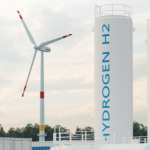Executive Summary
-
AI is revolutionizing green energy investment, making it more efficient and profitable.
-
Investors can leverage AI to predict energy production and optimize asset allocation.
-
The integration of AI in renewable energy portfolios reduces operational costs and enhances performance.
-
Key challenges include data privacy concerns and the high cost of AI technology.
-
Strategic insights and tools are available to overcome these challenges and maximize returns.
Introduction
In an era where sustainability is no longer optional, investors are increasingly turning to green energy portfolios. Yet, the challenge remains: how can one maximize returns while contributing to a sustainable future? Enter Artificial Intelligence (AI), a transformative technology reshaping investment strategies in the renewable energy sector. This article explores how AI can optimize green energy portfolios, offering investors a cutting-edge advantage.
Definitions / Context
Artificial Intelligence (AI):
A branch of computer science that simulates human intelligence through machines, particularly computer systems.
Green Energy Portfolio:
A collection of investments in renewable energy sources—such as solar, wind, and hydroelectric power—aimed at achieving financial returns while promoting environmental sustainability.
Benefits / Pros
-
Predictive Analytics: AI can analyze historical data to forecast energy production, aiding investors in making informed decisions.
-
Enhanced Asset Management: Automated systems optimize the performance of energy assets by predicting maintenance needs and reducing downtime.
-
Risk Mitigation: AI identifies patterns and anomalies, reducing the risk of financial losses due to unforeseen events.
-
Increased Efficiency: Machine learning algorithms optimize energy distribution, ensuring maximum utilization of renewable resources.
Risks / Cons / Challenges
-
Data Privacy: Handling vast amounts of sensitive data raises concerns over privacy and security.
-
High Costs: The initial investment in AI technology and infrastructure can be substantial.
-
Complexity: Implementing AI requires specialized knowledge and expertise, which may be a barrier for some investors.
Step-by-Step Process
How to Integrate AI into a Green Energy Portfolio
-
Assess Current Portfolio: Identify areas where AI can add value.
-
Select the Right AI Tools: Choose platforms that align with investment goals and budget.
-
Implement AI Solutions: Integrate AI technologies into existing systems.
-
Monitor and Adjust: Continuously evaluate AI performance and make necessary adjustments.
A mid-sized solar energy company implemented AI systems to predict local weather patterns.
The AI dynamically adjusted solar panel angles throughout the day, improving energy capture.
This led to a 20% increase in energy efficiency and a 15% reduction in operational costs over one year.
This real-world example demonstrates AI’s power to improve both sustainability and profitability in green energy investments.–Solar Energy Optimization with AI
Expert Tips / Strategic Insights
-
Stay Updated: Regularly update AI systems to leverage the latest advancements and maintain competitive advantage.
-
Collaborate with Experts: Engage with AI specialists to tailor solutions that meet specific investment needs.
-
Focus on Data Quality: Ensure all data input is accurate and comprehensive to improve AI predictions.
Tools / Resources / Calculators
-
AI Energy Optimization Platforms: Tools like AutoGrid, Greensmith, and Siemens EnergyIQ offer tailored solutions.
-
Solar Energy Calculators: Useful for estimating potential returns from AI-driven solar energy strategies.
-
Industry Reports: Subscribe to updates from IRENA (International Renewable Energy Agency) and McKinsey Energy Insights.
Conclusion
AI is no longer a futuristic concept—it is a practical, powerful tool for optimizing green energy portfolios. Investors who integrate AI into their strategy can improve efficiency, reduce risks, and enhance long-term returns. As the renewable sector grows, combining sustainability with smart technology provides a competitive edge. It’s time to harness AI for a cleaner and more profitable energy future.





















